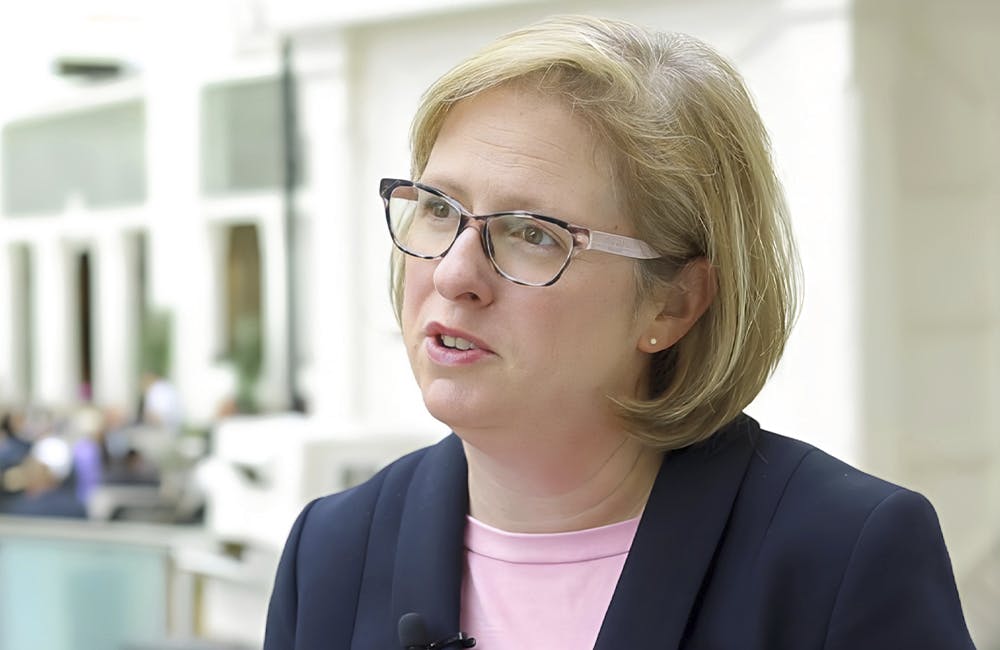Federal Shared Service Initiatives Moving from Planning to Implementation
The federal shared service strategy will impact government in areas such as customer service and payroll.

The Office of Management and Budget’s plan to transform the federal government’s shared services with a focus on customer needs is moving forward, Federal CIO Suzette Kent said Thursday.
OMB released a memo in April that established a shared services collaboration overseen by agencies that would act as Quality Service Management Offices and created a strategy to develop government-wide standards and priorities for federal shared services.
In focus for proposed changes are four shared-service areas — human resource transactions, financial management, cybersecurity and grants management — which are managed by the General Services Administration and the departments of the Treasury, Homeland Security, and Health and Human Services, Kent explained at the Shared Services Summit in Washington, D.C.
The planning and development for human resources, financial management and cybersecurity shared-service areas are on track to meet fiscal year 2020 goals, Kent said, adding that the quality service management offices leading those initiatives have identified cross-agency needs and standards to start working toward shared solutions. The fourth area (grants management) is slightly behind because of debates among agencies over their commonalities.
Nonetheless, the management offices have made substantial progress, in that they have moved “from planning to real implementation,” Kent said, adding that the first test case is GSA’s NewPay, which will use a software-as-a-service solution to scale up, streamline and standardize payroll processes across agencies.
Kent said that as other shared services roll out after NewPay, leadership will need to duplicate the model NewPay sets.
“The payroll experience is going to help us drive clarity about those interface escalation needs, things that we have to address in the workforce, how we best understand not just the changes inside the customer organization, but inside those quality service management lead offices,” Kent said. “What are the new skills that they need to have inside their organizations, and how do we scale those in a manner that aligns with transitioning of new customers?”
A key value for tackling that challenge, Kent added, is in focusing on customer values.
“We have to understand the customer impact,” Kent said. “What does that mean to interfaces; what does that mean to how people do their jobs; what does that mean from a timeline of all other things that customer agency might be doing at that point in time?”
Kent said that as the financial management, cybersecurity and grants management shared service initiatives start to develop products and services, customer engagement and emphasizing a marketplace model will lead to success.
Improving shared services is critical across government.
“It’s about the quality of service, keeping the solutions current and relevant, and being able to free up mission dollars for things that are focused on mission versus support services,” Kent said. “The feedback on ways that we can harden the process and ensure that as we go forward and as other services come through this process, it’s repeatable, it’s clear, and it gives us a path to continue to improve.”
This is a carousel with manually rotating slides. Use Next and Previous buttons to navigate or jump to a slide with the slide dots
-

A Prepared Workforce is Key to Cyber Resiliency
Strong training strategies and emphasizing cyber hygiene basics enhance security practices at federal agencies.
2m read -

Transitioning Systems for Modern Agency Missions
IT modernization is a constant process necessary for improving customer service, mission delivery and collaboration.
40m watch -

Navy Invests in Additive Manufacturing Workforce to Match Pentagon Strategy
DOD issued its Additive Manufacturing Strategy in 2021 to integrate with the private sector and create agile uses of the technology.
5m read -

Defense Officials: Cyber is a Sport That Needs Strong Teammates
Coast Guard, Marine Corps and Navy officials said they are working on new hiring strategies and partnerships amid evolving threats.
5m read








